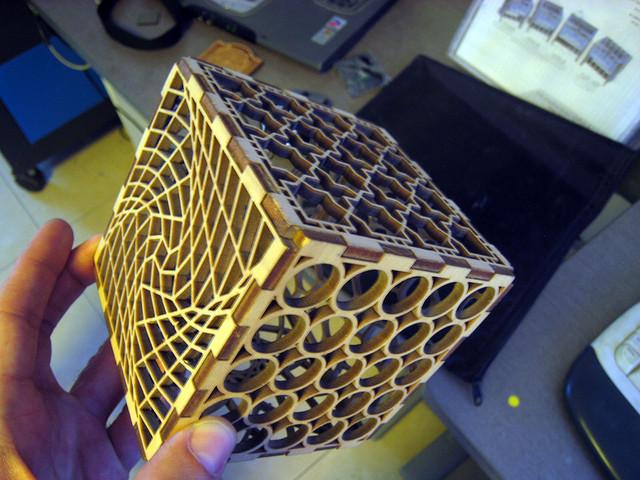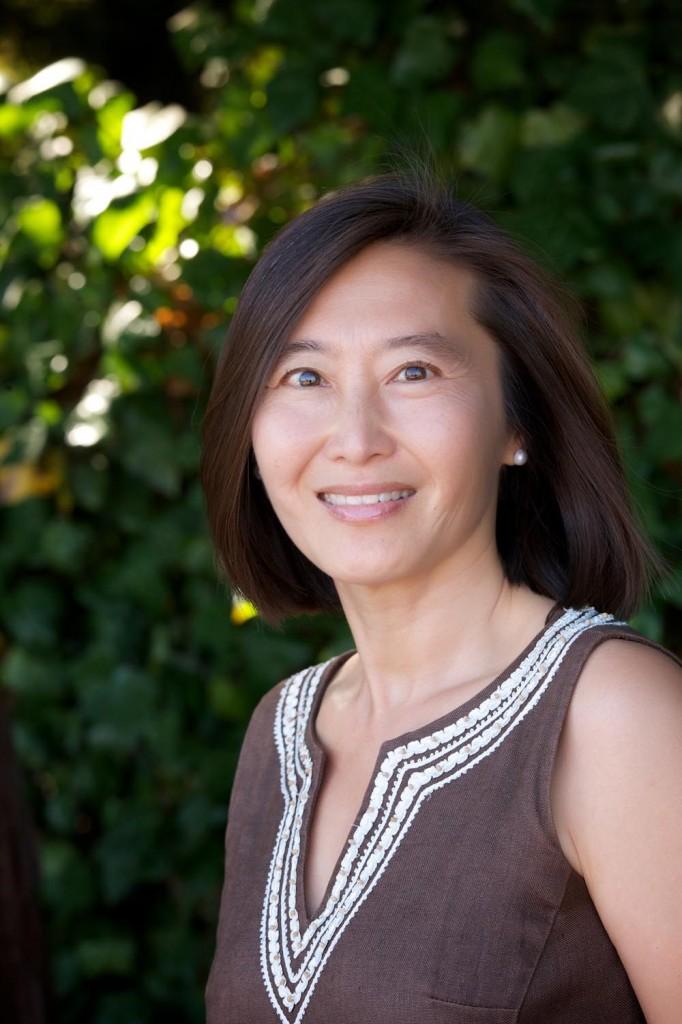How Does Silicon Valley Teach Its Children? With A FabLab!
 I recall sitting bored in my grade school science class decades ago, and wondering… Instead of giving us so many lectures, wouldn’t it be better to teach us how to build something cool instead? I felt that, by making real objects, we could learn in ways that were more memorable, interesting, and tangible.
I recall sitting bored in my grade school science class decades ago, and wondering… Instead of giving us so many lectures, wouldn’t it be better to teach us how to build something cool instead? I felt that, by making real objects, we could learn in ways that were more memorable, interesting, and tangible.
It turns out I wasn’t alone. What educators call project-based learning has become a major movement. And now, one elementary school in Silicon Valley is taking this idea to an even higher level.
This fall, Bullis Charter School in Los Altos, California is launching a fabrication laboratory—a “FabLab”—for its kids, complete with computer-aided design tools and a 3-D printer. Students will be able to design their ideas and then make them in real life. My oldest son happens to be one of those lucky children. What I only dreamed about in school—making real things based on the subject matter taught in class—is becoming the reality for kids today.
When I was growing up, lectures, memorization, and heavy testing were the dominant practice in education. Much of the world still follows this industrial-age model. But times have changed. Students are entering a world where they must learn how to be self-directed, self-motivated, able to function in collaborative teams, and flexible enough to adapt to changing situations. In short, they must be like startups. And startups make things in real life.
 I interviewed Bullis Charter School’s Superintendent/Principal Wanny Hersey and David Malpica, who is Director of the new FabLab@BCS. David was an educator in 3-D graphics and 3-D printing at Stanford University’s Transformative Learning Technologies Lab. Here is what they said about the new facility and the thinking behind it:
I interviewed Bullis Charter School’s Superintendent/Principal Wanny Hersey and David Malpica, who is Director of the new FabLab@BCS. David was an educator in 3-D graphics and 3-D printing at Stanford University’s Transformative Learning Technologies Lab. Here is what they said about the new facility and the thinking behind it:
Q: Why a FabLab in an elementary school?
Wanny: The FabLab is the natural next step for us. Our students are already tinkering and designing through project-based learning, but now they will be using the latest technologies to test their solutions. Instead of using cardboard and paper to create models, they can test their prototypes in 3-D simulations using the same innovative tools that are being used in the business world.
With the FabLab, we can nurture their natural interests and creativity by guiding them through the process of ideating, prototyping, and iterating in a school setting, regardless of their learning styles and abilities. Through failures and successes, there is a lot of learning that takes place, and lots of “ah-ha” moments. We have to provide time and opportunity for children to experience this on a regular basis. Through this, not only will their conceptual understandings be deeper and more meaningful, but they will also be constantly relearning and more willing to take risks because they are not fearful of failure.
Q: How will the FabLab be used to teach children?
David: There are two stages in the design fabrication process in the FabLab. The first stage is skill-building, where we do workshops with the students and focus on a specific skill, like soldering, 3-D modeling, or sewing for soft circuits, laser-cutting, polymer casting, and visual programming.
Once they get the skills, we move to the second stage, which is the project-based learning stage. We put students in teams to go through the design thinking process (or a similar process) for a real-world situation and have them begin to generate solutions. In this stage, they are ideating, prototyping, iterating—all in their own way, at their own level. At the end of this stage, you don’t come out with test scores; you come out with a product that is looked at from a qualitative point of view. There is no correct answer. But through the process, students are learning and using a plethora of skills: engineering, design, programming, and computing, to name a few.
Q: What is the philosophy of education behind the FabLab?
Wanny: The best way for students to learn and stay engaged is through experiential learning—learning by doing. In this model, when students are working at their level of understanding and their areas of interest and passion, there is a freedom to try new ideas and solve problems, from which more questions and idea generation come. I have seen this in all children, regardless of ability or background. When students are engaged, learning becomes self-directed and fluid and continuous. But somehow, our current education system has stripped all of that natural interest and curiosity away from our students and replaced it with a model where students become passive learners.
The world is a place where every discipline is intertwined, so why would we teach children skills and information in isolation? At Bullis Charter, we teach through instructional methods like project-based learning and design thinking, where students apply knowledge to create solutions for real-world situations and problems using a process that is human-centered, more action-oriented, and authentic.
David: We cannot overestimate the value of nurturing children’s interests and creativity when they are young. The National Education Longitudinal Study(1988) tracked the eventual career choices students made, and found that what was interesting for the students in elementary and middle school is what, in most cases, drove them to where they went in life—much more so than performance in specific subject areas like math. Traditionally, there have not been environments for collaboration and innovation to foster student interests in schools. If these are things that we want our children to have, then we should be creating spaces for this to take place.
Q: What would a student’s typical day at the FabLab look like?
David: A student’s or group’s typical day will evolve with time. Initially, we will run workshops and demos to learn some foundation skills. For example, we could give a tutorial on 2-D/3-D computer-assisted design for students to follow, and we would assist them with questions. Or we could demonstrate the use of a technology such as 3-D scanning, and then take turns to have them try it while everyone else is working on their group project.
All this will be going on while they are working on a specific project-based learning unit or design thinking challenge with other classes and teachers. They will also have the opportunity to come to the lab after school hours. At some point, students will become familiar with a small set of technologies for their current project, so then a student’s typical day would evolve into a prototyping-heavy day. They would be working exclusively on constructing their projects with some teacher, parent, and mentor support, but there would be little or no instruction.
Q: How does the Silicon Valley mindset influence the school?
Wanny: One of the greatest aspects of the Silicon Valley mindset is that everyone has a chance to be successful. It doesn’t matter if you’ve been in the industry for 10 years, or if you are in high school. Anyone could make the next big “thing.” We have that same philosophy at the school. For example, we don’t just want to offer music to some students who sign-up for it—all students participate in the music program because we believe in the innate capacity of every single person. The same is true for our science and engineering programs like the FabLab.
The mindset of Silicon Valley focuses on radical collaborations, innovative thinking, entrepreneurialism, risk-taking, and learning from failures. Why wait until our children are adults to expose them to these opportunities? We provide the Silicon Valley environment for our students, starting in kindergarten.
Q: How will these skills be useful for children in the future?
Wanny: Before I started the school, I went out and spoke with several different business leaders—CEOs, lawyers, financial investors—and asked them what they look for when they hire someone. The all responded with similar answers: they look for people who can communicate, collaborate, and work as part of a dynamic team. At our school, we are continually looking to see what the core competencies are that our students need to be successful, contributing members of our society. By focusing on and nourishing students’ interests, we are helping them become life-long learners and develop an appreciation for learning that can’t be achieved through traditional methods of teaching.
Q: What can other schools learn from the FabLab concept and the BCS model?
Wanny: Creativity and excitement for figuring things out are natural human characteristics, ones that can and should be nurtured. Traditional teaching has somehow extinguished those traits in our schools. With ideas like the FabLab and the rest of our curriculum, we hope that we are showing what is possible in public education.
David: What we are doing here can happen anywhere. We want schools to see that this is doable. We want them to take it to the parents and policymakers to generate change in our education system.
Victor W. Hwang is a venture capitalist, entrepreneur, and ecosystem designer in Silicon Valley with T2 Venture Creation. He is co-creator of Rainforest Architects, a workshop for those seeking to unleash the innovative potential of companies, communities, and countries. Follow him at @rainforestbook.

